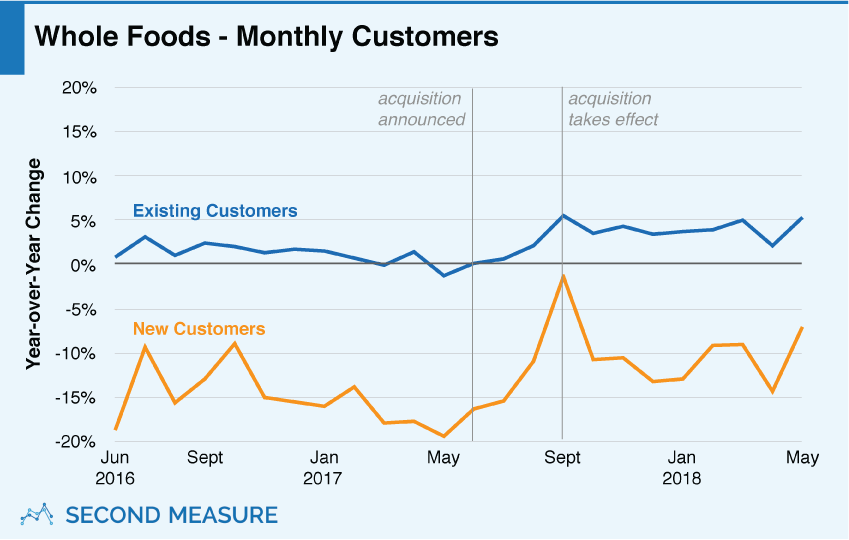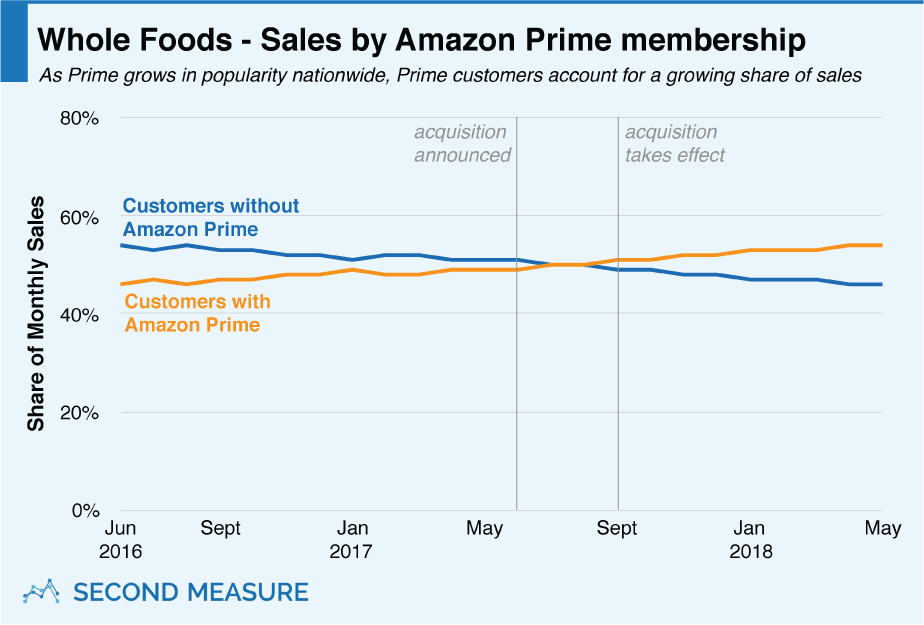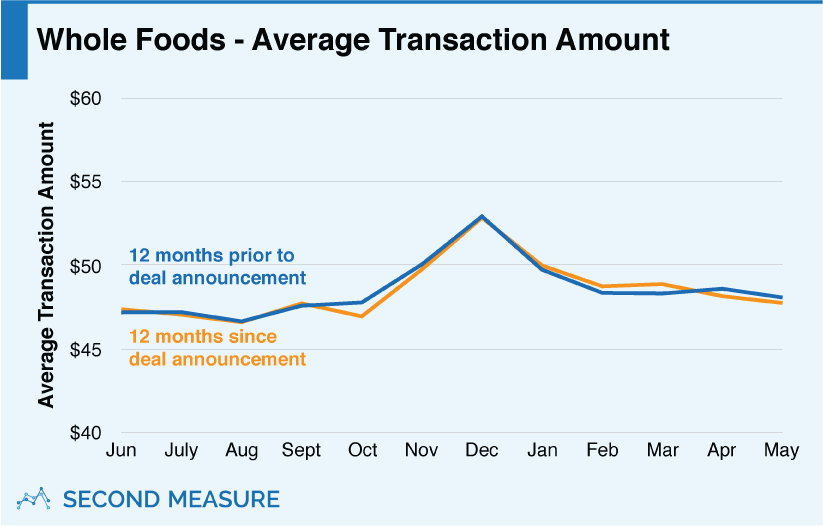NOTE: Bloomberg Second Measure launched a new and exclusive transaction dataset in July 2022. Our data continues to be broadly representative of U.S. consumers. As a result of this panel change, however, we recommend using only the latest posts in assessing metrics, and do not support referring to historical blog posts to infer period-over-period comparisons.
Headlines are celebrating the one-year anniversary of Amazon’s announced Whole Foods acquisition, but the impact on the high-end grocer has been hard to quantify, especially since Whole Foods no longer has a duty to report its finances separately from Amazon. Our data reveals that, since the deal took effect, customers are up 3 percent year over year at Whole Foods. And it’s returning customers—not new ones—who have been driving the increase.
Whole Foods sees more shoppers, but just a fraction are new
The acquisition officially took effect on August 28, with price cuts generating an immediate spike in traffic. But cheaper produce wasn’t enough to produce growth in first-time shoppers—in September new customers were down by 1 percent from the previous year. On the bright side, that decline in new customers was much smaller than any other month in the past year, suggesting some new patrons were at least temporarily excited to check out the Amazon effect.

Notably, new customers make up less than 5 percent of Whole Foods shoppers in a typical month. The other 95 percent—returning customers—also showed up to scope out the new ownership last September, and that lift has continued for several months. Since the Amazon deal took effect, existing customer traffic at Whole Foods has been up by 4 percent year over year.
Prime customer sales are on the rise
As customer traffic has increased, sales have also started to climb. Overall spending increased by 3 percent year over year since the deal took effect—a welcome improvement considering spending was nearly flat over the same period the year prior.
Whole Foods CEO John Mackey attributes the recent growth to free grocery delivery provided via Amazon Prime Now and, undoubtedly, Prime’s significance among Whole Foods customers is growing. Prime customer spending overtook non-Prime spending in the month after the acquisition was announced, although this was on track to happen regardless of the deal because Prime memberships have become more popular.

Two years ago, Prime members accounted for 46 percent of spending at Whole Foods. Currently, that number has risen to 54 percent. And shoppers enjoying exclusive Prime discounts are likely contributing an even higher share of sales, since some non-Prime customers have access to a family member’s Prime account.
Purchase totals show little change
Even amidst price cuts and discounts, spending habits at Whole Foods are nearly unchanged. The average number of monthly transactions per customer is down less than one percent year over year. In the past year, the average Whole Foods customer visited the store between two and three times per month. Similarly, the average transaction amount over the past year—$48—is close to flat, down by just a tenth of a percent.

Amazon Prime members can now enjoy exclusive discounts at Whole Foods in nearly half of the country, with more states being added soon. Get in touch to follow Prime’s impact on spending at Whole Foods.
Oh, and we’re hiring.
